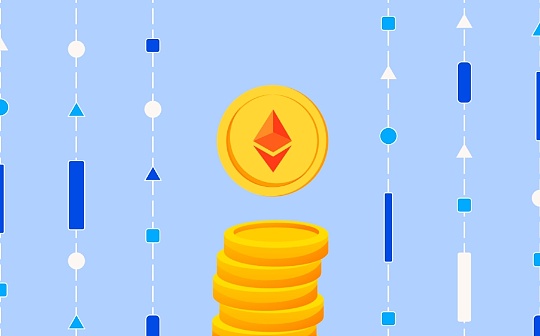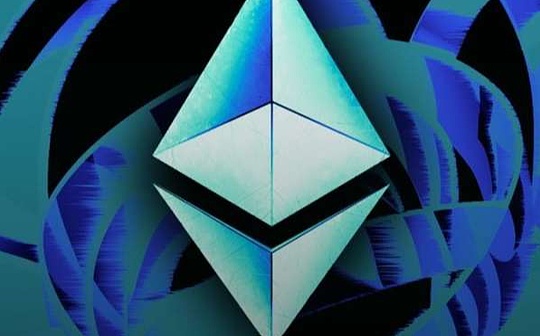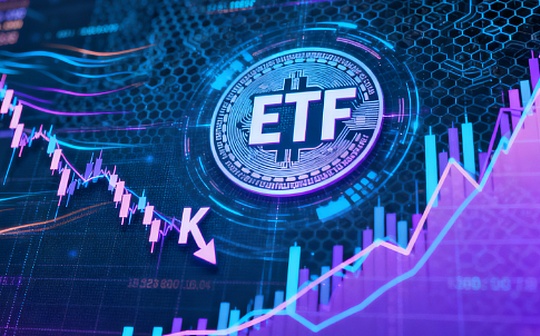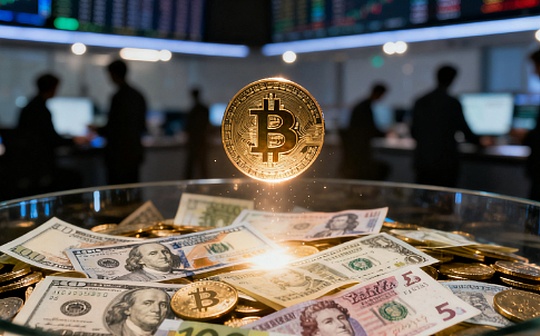
Deng Tong, Bitchain Vision
On July 30, 2025, Ethereum will celebrate its tenth anniversary.After ten years of ups and downs, what major events have occurred in the history of Ethereum’s development?At the moment when the Ethereum market is booming, who is buying?What new narratives does Ethereum have?Can you reach the $4,000 mark?
1. Review of major events on Ethereum’s ten-year journey
In 2013, Vitalik Buterin conceived Ethereum.In 2014, he started the development of Ethereum with Gavin Wood, Charles Hoskinson, Anthony Di Iorio and Joseph Lubin, and Ethereum officially went online on July 30, 2015.Now, Ethereum is about to celebrate its tenth anniversary. In this section, let us review the major events in the history of Ethereum’s development and the highlights of Ethereum’s development.
-
In 2013, Vitalik Buterin released the Ethereum white paper.In the white paper, Vitalik admitted that the birth of Bitcoin in 2009 was a major breakthrough for Satoshi Nakamoto.However, what Vitalik really wants to scale is the underlying blockchain technology as a tool for distributed consensus.
-
From July 22 to September 2, 2014, Ethereum will be launched and people can buy Ethereum using Bitcoin.In an announcement released by Ethereum, the discount for Ethereum was set to 2,000 ETH per BTC and dropped linearly to 1,337 ETH per BTC within 42 days.This means the issuance price of ETH is USD 0.29 per ETH.But when ETH first traded on August 7, 2015, it traded at $2.77.
-
On July 30, 2015, Frontier, the first version of Ethereum, was officially launched, marking the official launch of the Ethereum main network.The Ethereum network has officially moved from theory to practice. Developers can dig Ethereum and start developing dApps and various tools, taking a key first step for the development of the Ethereum ecosystem.
-
On March 14, 2016, the Homestead Hard Fork was officially launched.This fork marks Ethereum’s move from an experimental stage to a more stable official version, laying an important foundation for subsequent development.
-
On July 20, 2016, Ethereum suffered its first major hack, namely the DAO attack, and caused the DAO fork.The DAO attack originated from an unsafe contract that led to hackers stealing 3.6 million ETH.The DAO fork is conducted by the Ethereum community through a voting system, and any ETH holder can vote through a voting platform.Ultimately, 85% of voters agreed to the fork.However, some miners refused to fork, which led to the birth of Ethereum Classic (ETC).
-
On October 18, 2016, Tangerine Whistle hard fork was launched to solve the urgent network health problems faced by the Ethereum network.
-
On October 16, 2017, the Byzantine Hard Fork was officially launched.It is the first hard fork in the development stage of Ethereum’s Metropolis, which includes 9 Ethereum Improvement Protocols (EIPs), aiming to improve Ethereum’s operating efficiency, privacy and security, and also reduces block rewards from 5ETH to 3ETH and postpones the “difficulty bomb”.
-
Constantinople Hard Fork on February 28, 2019.The Constantinople Hard Fork aims to improve the operational efficiency of Ethereum and design more optimized solutions for smart contracts and decentralized applications.
-
Dec 9, 2019, Istanbul Hard Fork.The upgrade improves the Denial of Service (DoS) attack that Ethereum suffered a few years ago.This hard fork also enables interoperability between Ethereum and Zcash and allows contracts to have more innovative features.
-
On January 2, 2020, the “Muir Glacier” (Muir Glacier) hard fork, delaying the “difficulty bomb” by 4 million new blocks through a hard fork, for about 611 days, buying more time for Ethereum to transition to a proof of stake mechanism.
-
On December 1, 2020, the beacon chain began to produce blocks.The Beacon Chain is a core component of Ethereum 2.0 and is a brand new Proof of Stake (PoS) blockchain.
-
April 15, 2021, Berlin upgraded.This hard fork optimizes Gas fees for certain operations on EVM and adds support for multiple transaction types.
-
On August 5, 2021, London Hard Fork introduced EIP 1559, which implements a basic fee system, a tipping mechanism, and a feature that allows users to specify the maximum fee.If there is a difference between the maximum fee, the underlying fee and the miner’s tip, the user will receive an Ethereum refund.
-
The Altair fork on October 27, 2021 is the first upgrade of the beacon chain.The two main upgrades of the Altair fork include the introduction of the “inactive + confiscation” mechanism and support for light clients.”Inactivity + Cut Penalty” reduces rewards for inactive stakeholders on the network, while support for light clients allows validators to access the blockchain without the need to continuously connect to the blockchain.
-
On December 9, 2021, Arrow Glacier launched to postpone the Ethereum network’s “difficulty bomb” until June 2022.
-
On June 30, 2022, the “Grey Glacier” upgrade delayed the difficulty bomb by 3 months.
-
On September 15, 2022, the Ethereum merger and upgrade was completed, which is an important event in the transformation of the Ethereum blockchain from a Proof of Work (PoW) consensus mechanism to a Proof of Stake (PoS) consensus mechanism.This upgrade will merge the Ethereum main network and beacon chain, which is a milestone in the history of blockchain development.
-
In June 2022, Gray Glacier was upgraded.This upgrade once again delayed the difficulty bomb, further gaining time for Ethereum’s complete transition to the proof of stake mechanism, ensuring that the difficulty of network mining will not increase excessively due to the difficulty bomb, and maintaining the stable operation of the network.
-
In March 2024, Dencun was upgraded.This upgrade introduces data blobs to layer two expansion, which helps improve the performance of Ethereum layer two solutions, improves network scalability, and lays the foundation for reducing transaction costs and improving transaction processing speed.
-
On May 24, 2024, the SEC officially approved the 19b-4 form of the Ethereum spot ETF, involving many institutions such as BlackRock, Invesco, and Fidelity.Form 19b-4 is mainly used for the rule change application submitted by the stock exchange, which is a key step in the listing of Ethereum spot ETFs.On July 23, 2024, the SEC officially approved the S-1 document of the ETF, and the Ethereum spot ETF was approved for listing.The S-1 document is the last step before the fund officially begins its offering and trading. This approval marks the official entry of Ethereum spot ETFs into the market.
-
On May 7, 2025, the Pectra upgrade activated.It introduces 11 Ethereum Improvement Proposals (EIPs) to enhance the staking, scalability and user experience of the Ethereum network.
2. Who is buying ETH recently?
1. Giant Whale
-
On July 21, James Wynn closed its long positions in ETH (25x leverage) and PEPE (10x leverage) positions, making a profit of $538,500.
-
On July 20, a whale submitted 103 WBTCs ($12.22 million) from Binance, and exchanged 70 of them on the chain for 2,214 ETHs ($8.26 million) with a exchange rate of 0.0316.
-
On July 20, The White Whale, the top trader on the Hyperliquid platform, made nearly $30 million in just one week.In the past week, it has been longing ETH and SOL through 4 wallets, locking in nearly $30 million in revenue, firmly ranking first in the rankings.
-
On July 20, a hacker who stole more than $300 million from Coinbase users bought another 649.62 ETH ($2.31 million) for $3,561 nine hours ago.
-
On July 20, two newly created “whale” or institutional wallets purchased 58,268 ETHs through FalconX and Galaxy Digital, worth approximately $212 million.
-
On July 19, the “big whale/institution that hoards ETH through FalconX” continued to hoard 19,550 ETH (approximately $70.7 million).Since July 12, the address has continued to stockpile 122,000 ETH (approximately US$435 million) through FalconX, with an average price of approximately US$3,213.
2. Institutions
-
On July 18, Nasdaq listed company Bit Digital (stock code: BTBT) announced that it had purchased approximately 19,683 ETH using the net proceeds of the recently completed targeted share issuance of US$67.3 million.After this transaction, Bit Digital held a total of approximately 120,306 Ethereum.
-
On July 18, Trump’s family crypto project WLFI spent 3 million USDC to increase its holdings of 861 ETH.
-
On July 18, Nasdaq-listed Thumzup Media Corporation announced that the company’s board of directors has approved and authorized the company to invest $250 million in cryptocurrency. The cryptocurrencies to be invested in at this stage include: BTC, ETH, SOL, XRP, DOGE, LTC and USDC, aiming to diversify its cryptocurrency portfolio.
-
On July 18, SharpLink increased its holdings of 18,712 ETH, holding a total of 326,074, worth US$1.14 billion.
-
On July 17, BlackRock purchased another 158,875 ETH worth about $574 million.This is the agency’s cumulative purchase of 363,445 ETHs in two days, with a total value of US$1.31 billion.Currently, BlackRock holds a total of 2.46 million ETH, worth about US$8.9 billion.
-
On July 17, GameSquare Holdings announced plans to issue 4666667 common shares to raise $70 million, and the company plans to use the funds to increase its ETH holdings.
3. What new narratives does ETH have?
1. Treasury enterprises
More and more companies are hoarding cryptocurrencies, following Strategy and transforming into crypto treasury companies.
On May 27, 2025, sports betting operator SharpLink Gaming, Inc. (NASDAQ: SBET) announced that it had signed a securities purchase agreement to conduct a $425 million public corporate private equity investment (PIPE) with plans to issue approximately 69.1 million common shares (or equivalent securities) at a price of $6.15 per share ($6.72 per share for the company’s management team).SharpLink uses the funds raised to purchase Ethereum (ETH) as the company’s main treasury reserve asset.After the transaction was completed, Joseph Lubin, co-founder of Ethereum and founder and CEO of Consensys, served as chairman of the board of directors of SharpLink and assisted the company in developing its core business as a strategic consultant.Since then, SharpLink has officially become an Ethereum treasury enterprise and is known as the “ETH version of micro strategy”.
For details, please view the Bitchain Vision article:“From gambling operators to “ETH version micro strategy” to understand SharpLink’s Ethereum treasury”
2. Ethereum ETF
Since the US SEC officially approved the Ethereum spot ETF in July 2024, products represented by BlackRock (ETHA), FITH and Grayscale (ETH) have quickly become the darling of funds.BlackRock ETHA tops the list with US$21 billion AUM, with an average daily net inflow of more than US$120 million.This scale growth not only reflects the recognition of ETH by traditional institutions, but also gradually shifts ETH from “high-risk crypto assets” to “mainstream allocation targets”.
The popularity of Ethereum ETFs has significantly changed the holding structure of ETH – the proportion of institutional holdings rose from 12% in 2024 to 27% in 2025, while the proportion of exchange circulation fell from 31% to 18%, a new low since 2018.This “de-exchange” trend reduces short-term selling pressure, reducing ETH price volatility (30-day annualized) from 65% to 42%, closer to traditional assets (such as gold volatility of about 15%), further attracting risk-averse funds to enter the market.ETH is integrating into the traditional financial system.
3. Sovereign Wealth Fund
On June 4, Consensys CEO and co-founder of Ethereum revealed that the company is negotiating with a “big power” sovereign wealth fund and banks to build infrastructure in the Ethereum ecosystem.Lubin predicts that Ethereum will usher in a decentralized super cycle and may become the core of the new global financial system.
Vitalik Buterin said that the Ethereum blockchain capabilities will increase by 10 times in the next year.Lubin calls Ethereum a “gold standard of trust” and believes its value may eventually surpass Bitcoin.
4. Reserve assets of the new digital dollar economy
The development of the US dollar stablecoin has created unprecedented opportunities for Ethereum.Stablecoins provide access to individuals around the world to access the dollar — a 60-fold increase since 2020 to over $200 billion — millions of new dollar holders need more than digital cash.They need income, investment opportunities and financial services.Due to regulatory and infrastructure restrictions, traditional finance cannot serve this huge new market.
4. Will ETH enter the $4,000 mark?Is the copycat season coming?
The strong price trend of Ethereum has become one of the highlights of the cryptocurrency market in July.“Ethereum’s market value has increased by $150 billion since July 1, while net short exposure hit an all-time high a few days ago,” Kobeissi noted.

ETH/USD 3-hour chart.Source: The Kobeissi Letter/X
“In addition, many shorts use leverage, which further adds pressure. Ethereum may soon reach $4,000.” If Ethereum rises another 10%, there will be an additional $1 billion short positions that will be liquidated.

The ETH exchange clearing heat map as of July 18.Source: The Kobeissi Letter/X
On July 20, LD Capital founder Yi Lihua posted a message saying: “ETH has broken 3700. The weakness in the past few years has made everyone forget the strength of BTC in the 2017 and 20 years. ETH has far outperformed BTC. In this round, we insist on ETH to continue to outperform BTC. It has been verified. Don’t short the bull market in the bull market. At least you will not miss this round of market.”
QCP Capital said in its market weekly report released on July 21 that multiple altcoin season indicators have exceeded 50, reaching the highest level since December last year. In addition, the open interest of ETH perpetual contracts jumped from $18 billion to $28 billion in one week, marking that the altcoin season may have officially begun.QCP pointed out that the dominant player of this cycle is institutional investors. Benefiting from the clarity of the stablecoin regulatory framework brought about by the implementation of the GENIUS Act, corporate finance has begun to increase holdings of L1 public chain tokens such as ETH, SOL, XRP and ADA, similar to BTC’s role in the financial allocation of Strategy and Metaplanet.
If ETH is approved by the SEC in the coming months to pledge spot ETFs, it may attract funds to shift from BTC ETFs to ETH, further unlocking earnings potential.In fact, last week, the net daily inflow of ETH spot ETFs exceeded BTC for two consecutive days, showing a surge in institutional interest in ETH, and BlackRock also has confidence in its pledge ETH ETF.
In addition, the bullish spread trading in the ETH option market is active, and the bullish spread positions that expire in September and December are established to increase volume, highlighting the market’s optimism about the fourth quarter.The current BTC market dominance has fallen from 64% to 60%, while the ETH market share has risen from 9.7% to 11.6%. If the trend continues, a new round of altcoin season may have begun.QCP stated that it will continue to pay attention to relevant signals and update its trends as soon as possible.







